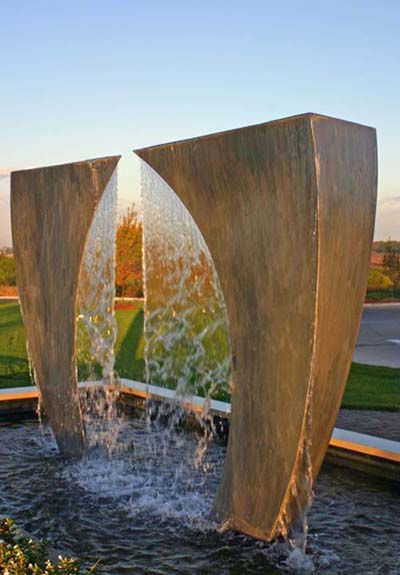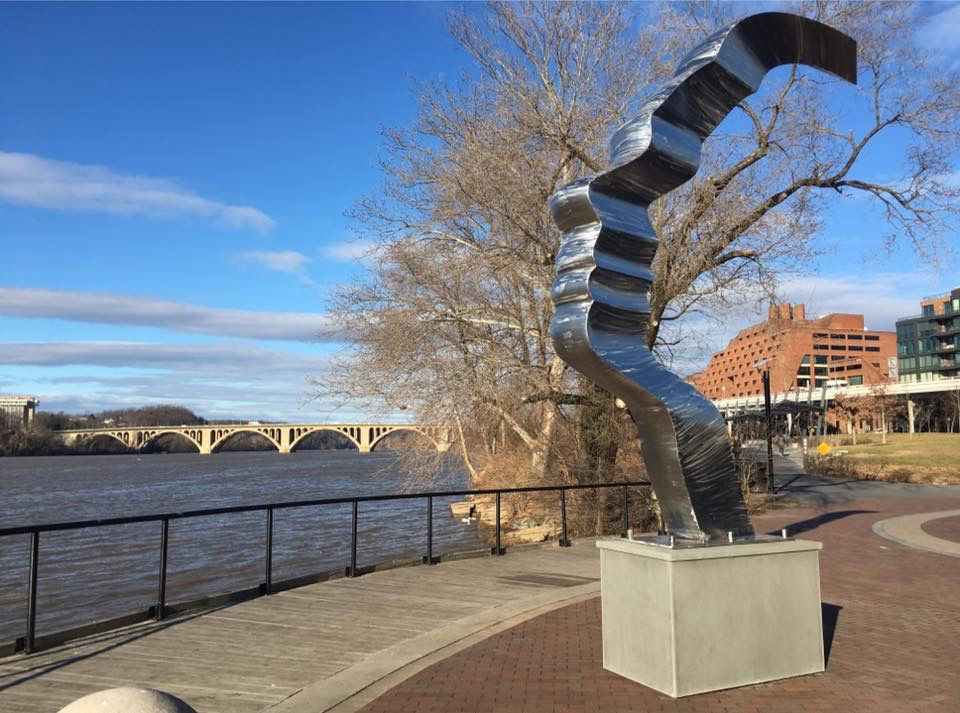Vertical Sculptures in Suspension: Defying Gravity
- sonya4083
- Aug 26
- 4 min read

When I think about vertical sculptures, I think about creating the impossible: the feeling of forms floating effortlessly in space. Suspension is both an act of faith and a feat of engineering. It requires exacting precision to achieve balance, yet when it succeeds, the effect is transformative. Viewers are invited to look upward, to dream beyond the boundaries of their everyday lives, and to experience a moment of awe in the presence of something that seems to transcend gravity itself.
Skybound: Sculpture in Suspension
One of my signature works in this genre is Skybound, part of the permanent collection of the Cincinnati Art Museum in Ohio. This monumental vertical sculpture embodies the essence of suspension. The piece consists of six meticulously aligned elements that appear to hover and ascend toward the sky. With no visible supports, the sculpture challenges perception, creating the illusion of forms floating weightlessly.
The alignment of each component required extraordinary precision. Every element is interlocked with the one below in a way that conceals its structural junctions. This invisible engineering is what enhances the effect of levitation. For visitors, the sculpture becomes less about mechanics and more about poetry: the upward momentum reads as growth, aspiration, and limitless possibility.

A Dialogue with Space and Light
Skybound is designed not only as an object, but as an experience in dialogue with its environment. Its reflective stainless-steel surfaces capture shifting light, clouds, and landscape, making the sculpture change character throughout the day. At times, it blends seamlessly into the sky; at others, it reflects its surroundings back to the viewer, serving as both mirror and metaphor.
This interplay between reflection, verticality, and suspension is central to the work. Historically, vertical forms, from ancient obelisks to Gothic cathedrals, have symbolized transcendence and humanity’s longing for the divine. Skybound carries forward this lineage into a contemporary vocabulary, using materials and engineering to embody that same sense of aspiration.
“Verticality is about more than height, it’s about perspective. It asks us to engage with space in a new way, to lift our gaze and consider the beauty of the unseen.” – Barton Rubenstein

A Sculpture that Shifts with the Seasons
Part of the magic of Skybound lies in its dialogue with the environment. Its polished stainless-steel surfaces mirror the sky, trees, and surrounding landscape, ensuring that the work is never the same twice. In spring, its reflective surfaces shimmer with the fresh greens of renewal; in summer, it gleams brightly against a clear blue sky. Come autumn, the sculpture transforms again, its silver facets catching the fiery reds and golds of the changing leaves. In winter, it takes on a different character, often reflecting stark skies or standing in sharp contrast to snow, embodying stillness and resilience.
This seasonal transformation reinforces Skybound’s central theme of ascension and change. Like nature itself, the sculpture is in constant flux, a vertical form that feels alive and responsive. It offers visitors a reason to return, to see how time and environment alter the experience of suspension sculpture in ways both subtle and profound.
The Art and Engineering of Suspension
Achieving the illusion of floating requires meticulous technical planning. Each component of Skybound was fabricated to exacting tolerances so that balance could be achieved invisibly. The interlocking system distributes weight through concealed connections, giving the impression that the sculpture could topple at any moment, while in reality it is firmly anchored and structurally secure.
This duality, delicacy and strength, is what defines successful suspension sculpture. It invites the viewer to marvel at what seems impossible while trusting in the unseen engineering that makes it real.
Vertical Sculpture in Public Spaces
Placed within the Cincinnati Art Museum’s outdoor setting, Skybound enhances the institution’s mission of blending art with nature. Its vertical thrust complements the surrounding landscape while offering visitors a beacon of inspiration. People are drawn not only to its scale but also to its mystery, compelled to stand beneath it and contemplate what it means to reach beyond limits.
For developers, architects, and cultural institutions, investing in vertical sculptures for public spaces is an opportunity to anchor an environment with striking, memorable art. Unlike purely decorative works, these sculptures redefine the experience of space. They lift the eye, challenge perception, and create landmarks that become inseparable from the identity of a site.
Why Vertical Sculptures Matter
Verticality is a universal symbol of human aspiration. From the Tower of Babel to the spires of modern skyscrapers, reaching upward has always embodied ambition, transcendence, and progress. Contemporary monumental vertical sculptures like Skybound continue this tradition, using modern materials and hidden engineering to create experiences that inspire awe and reflection.
For developers, these works serve as powerful tools of placemaking. A vertical sculpture does more than occupy space, it transforms it into a destination. It offers visitors a reason to pause, gather, and look up together, creating shared moments of wonder.
Through its blend of engineering precision, reflective surfaces, and poetic symbolism, Skybound exemplifies the potential of vertical sculpture in suspension to transform environments. It demonstrates how art can make the impossible feel possible, how steel can seem to defy gravity, and how public art can invite us all to lift our gaze.
At their best, vertical sculptures are not simply objects of admiration, they are invitations to dream.





Comments